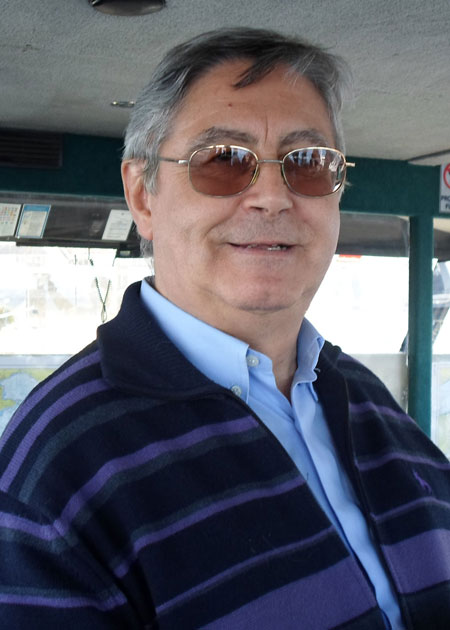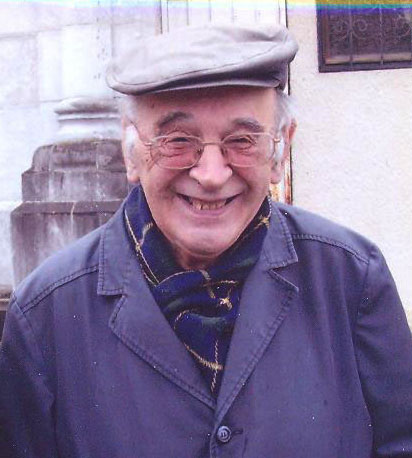Family News - 2012 November 14th
Contents
- A word from the Superior General
- St Michael Garicoits wrote...
- Sheet nr. 2: listening to the Mystery of the Proclamation of the Good News
- A meeting that changes life
- 5 mn. with the Community of Bethlehem-Nazareth
- In memoriam: Brother Fernand Fonquerle
- History of the General Chapters of the Congregation (10)
| formato PDF |
A word from the Superior General
OUR SERVICE IN THE CHURCH
The Rule of Life of 1969 already distinguished between the mission and the apostolic ministries in two distinct chapters, chapter 2 and chapter 7; this distinction is taken up again in chapters 2 and 5. By mission we mean the Churchs evangelising task so that all mankind may come to know Jesus Christ. This unique mission reaches its fulfilment in the different activities inside and outside Christian communities.
In a short article in the NEF in 1968, Fr Duvignau, having explained the charism, continued by clarifying the spirituality and the mission: by taking a look at the History of the Congregation, he noted that Betharram hasnt a specific work. To begin with there were the popular missions and education; from 1910 onwards animation of parishes appeared at the same time as responsibility for seminaries. Having no specific work means that the identity of Betharram is not linked to good works. Having no specific work can also mean that any good work can be linked with the charism. And even if at some point in time a certain work has to be abandoned Betharram doesnt lose her raison detre. St Michael says so in his own way in a quotation from Maître Spirituel p. 399, which resumes article 15 in the Rule.
So for example communities today exist around Social Services which is something new for the Congregation: the Care Home for the elderly in Betharram or the Family Home in Monteporzio for the care of Aides patients, the dispensary at Niem and the St Michael Garicoits Centre in Buar which is also for the care of Aids patients in the Central African Republic.
The pre Vatican II constitutions stated in Article 3: The main activities for members of this Institute are: preaching the Word of God (missions, retreats etc): the Christian education of the youth, the rights of the Holy See being safeguarded in everything concerning seminaries.
The 1969 Rule of Life, chapter 7 entitled Apostolic Activities mentions five distinct missionary fields: 1. The mission and the poor; 2. The mission in schools; 3. Parishes and other pastoral activities; 4. Ecumenism; 5. The mission to non Christian countries.
The 2012 Rule of Life, chapter VI entitled Our Service in the Church mentions three domains: 1. Our priorities: service of the local Church (114), proximity to every human being in his/her different forms of poverty. 2. Fields of activity: Pastoral care of the young (117); Educational mission (118 120); Pastoral care of the family (121); Parish ministry (122 123); spiritual animation and accompaniment (124); promotion of the human being (125); first evangelisation (126); ecumenism (127); Interreligious dialogue, encounter of cultures (128 129); 3. Criteria for discernment of activities (130 135).
Missionary activities have become more and more diversified. Some have a long history in the Congregation, for example education, first evangelisation, social promotion. Others are part of the Church in todays world, for example ecumenism, interreligious dialogue and encounter of cultures. Finally there are those which stem from what is happening in the Church today: the pastoral care of the youth, the family or the animation and spiritual accompaniment. These latter can be put into practice in any classical activity: the parish, the college, as is the case for our young religious Brothers who are used to spiritual accompaniment having had a good experience of it during their own formation. Actually the religious are sensitive to other experiences for example the service of the local Church, choice for the poor. It even directs the missionary choices of some of the Vicariates.
To this end (of being faithful servants of the Gospel) the whole Congregation, by its General and Regional Chapters, continually discerns the choices, the orientations and methods of our various ministries. In community and vicariate we periodically examine the validity of our apostolic works (art 19); the art of discernment is part of our life style so that we cling to nothing and that we feel free to respond to the new and urgent needs in the Church and in the world. So as to help us in this operation, the criteria are laid down stemming as they do from our charism and our life style (arts 130 135). We must be vigilant and not let ourselves be swept off our feet by apostolic activities. We are responsible for the spirit in which we fulfil our mission. The Lord is master of the harvest and of the vineyard, and we are his servants, sometimes useless servants. The aim of our apostolic activities is to make Jesus known and loved and help him to be followed so that the Kingdom of God may grow in the Church and in the world. We are not working to feel good and to be at ease. We must become useless servants, sometimes suffering humiliation so that the Lord and his Kingdom may be clearly seen. The mission will not be realised without apostolic activities, no more than apostolic activities can wear out the mission. Sometimes we are mistaken on this point by the healthy appearances of our good works. Apostolic activities, however urgent they may be, are not self justified. They have their foundations in our experience of faith and our following of Jesus Christ. He is the source and end of our pastoral work. If there is no reference to Him, all our efforts are useless! Just as the witness of our Congregation is not useless, as we proclaim that Jesus Christ is the unique necessary, and the witness of our communities, as they declare that it is only through him that new interpersonal relations are possible combining unity with respect for the differences. (Cf Rule of Life art 112; VC 72b).
Gaspar Fernández Pérez, SCJ
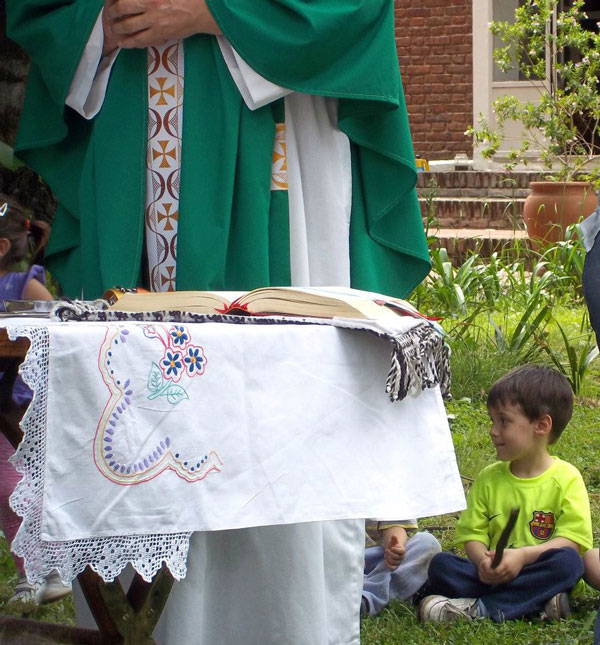
 St Michael Garicoits wrote...
St Michael Garicoits wrote...
What is this steadfastness which we have spoken so much about? Is it this great gift from God whereby we persevere in holiness until the hour of our death, and which God grants to a saintly life or to the predestined? ... This perseverance and steadfastness is a very special virtue because there is a special cause for goodness. ... Yes, there is a special advantage in carrying on a work despite all the obstacles, despite the boredom, disgust, the wish to change, the wish not to be fickle, to persist, to hold on, that is the particular advantage which makes steadfastness into a special virtue which is distinct from the other virtues. (M 387)
PREPARING THE 150th ANNIVERSARY
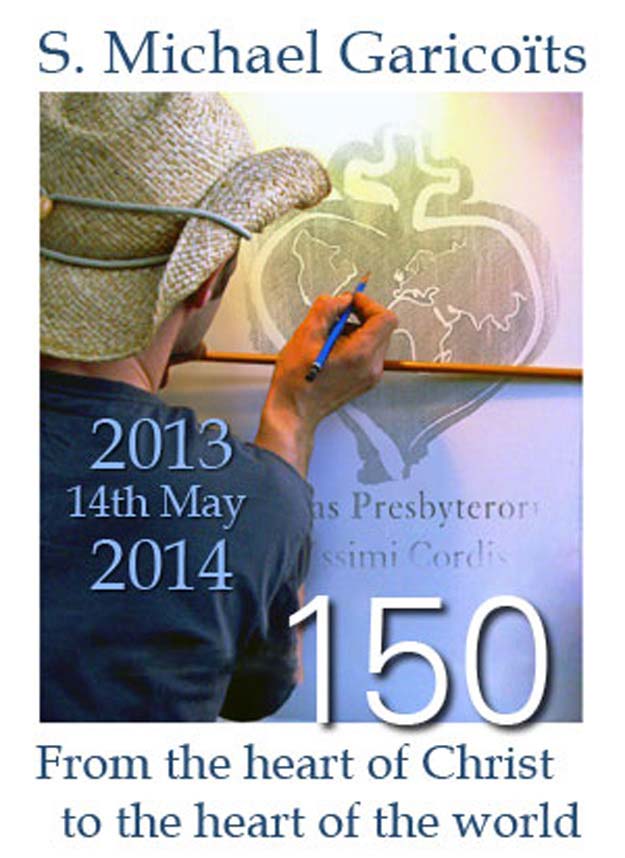
SHEET Nr. 2: Listening to the Mystery of the Proclamation of the Good News
Second step of an itinerary of personal and community meditation proposed by Frs. Gaston Hialé and Philippe Hourcade, scj.
Introduction to the meeting: praying together
- Prayer together of Psalm 1 Happy the man....
- Listen to a reading of the Beatitudes, Charter of the Kingdom of Heaven.
- 10 minutes silence.
- Shared prayer.
Sharing a text on our charism
Its the text found in Spiritual Doctrine, page 45 (Correspondence, letter 293).
Here we can begin this exchange of thoughts knowing that we share with the laity a similar baptismal identity and a similar call to embody the mission of Christ which he extends to all his disciples after his resurrection. We can invite a few of the laity to all or part of our time together.
Review of our religious life in the light of the Manifesto
Lets keep our attention fixed on the second paragraph of the Manifesto.
When he entered the world, driven by the Spirit of his Father, he submitted himself to his Fathers plans for him and put himself in the place of all the victims: You, who wanted no sacrifice or oblation, prepared a body for me. You took no pleasure in holocausts or sacrifices for sin; then I said: just as I was commanded in the scroll of the book: God, here I am! I am coming to obey your will (Hebrews 10,9)
From our charism we are granted to become men idonei, expediti, expositi (ability to be received, a life given up in reply, maximum openness). What does this mean for us, religious of apostolic life, to have as our mission the realisation of humanity according to Christ? Our Father, Saint Michael shows us, from his own experience, that the secret of the law of love is learned in contemplation. Where are we with contemplation? It could be just as well before, during or after this sharing, to reread and meditate on the 7 points On the making of a sound and right decision (A good example of this method is to be found in Spiritual Doctrine, pages 281 282) to notice the order and importance attached to spiritual realities. It is all a question of having our lives rooted in the ever increasing knowledge of the overabundance and gratuity of love which rouses in us an overflowing love in our response: You have loved me so much; you have done so much to elicit my love for you so........ Here I am!
Community prayer with the Rosary
With the decade of Hail Marys contemplating the mystery of the Proclamation of the Kingdom of God, we suggest asking for this fruit:
A heart like that of Jesus, meek and humble, to go to him and to all our brothers, the poor and the lowly, in the name of the Gospel.
Decisions by the Superior General & Council
- Appointment of a study commission for the enhancement of the site of Betharram. The members are: Fr. Jean-Luc MORIN, Fr. Jean Dominique DELGUE, Br. Emile GARAT, Fr. Ercole CERIANI, Fr. Mario LONGONI, scj, Mr Patrick DAYDE, Mr Laparrade, Mr Larran, Mr Hervé JOAN-GRANGE, expert
- Admission to Perpetual Vows, on 19 October 2012: Br. Osmar Vicente Caceres Spaini (Paraguay), Br. Wagner Aparecido Ferreira (Brazil).
- Admission to the Diaconate: on October 2012, the Brothers from Brazil: Marcelo Rodrigues Da Silva, Eder Chaves Gonçalves and Francisco de Assis Dos Santos.
- Following the proposal from Mgr Walmor Oliveira de Azevedo, archbishop of Belo Horizonte, and on the request submitted by the Regional Superior of the Region Etchecopar, the General Superior approved the taking-up of the responsability of the São Sebastião parish of Sabará (Archdiocese of Belo Horizonte) on the part of the Vicariate of Brazil. Lets rejoice for this sign of trust and pray for our brothers who are going to take care of this parish.
LAY SPIRTUALITY
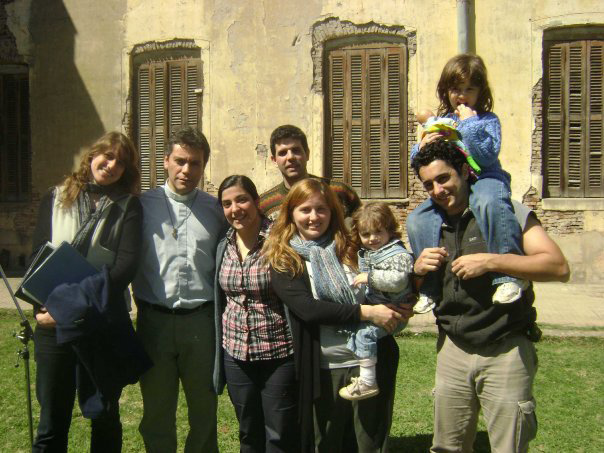
on October 26-28 in Adrogué
A MEETING THAT CHANGES LIFE
Maria Eugenia Martiarena belongs to the group of the Retreat House villa Betharram in Adrogué. Together with Fr. Daniel Gonzalez, the group welcomes and helps other young people to make the experience of the Ignatian Exercises. María Eugenia discovered Jesus annihilated and obedient of Saint Michaels spirituality and fell in love with Him. This is what her story is all about...
I am actually discovering something of what I would like to adopt: for example chastity and poverty not only as a form of freedom and availability, but rather as an offering and way of life which I choose and which shapes me in the image of Jesus Christ, poor and chaste, and of all those who expect everything from God. Once I am emptied of everything and everyone, especially of myself, I can make room for God where I can meet Him alone, for Him alone, and for those whom he loves; and as I love them, I would wish to serve them even at the cost of my life.
This is not a dream of consecrated life; thats not what I am looking for nor expect. Consequently I can choose with greater liberty and confidence knowing how much the initiative and my reply come from the Lord himself. Every time and little by little, I am discovering to what extent the invitation supposes and contains my personal reality in depth and in the flesh; everything has meaning and, as a woman, there is greater freedom and fullness.
In concrete terms, I feel that I am being invited to a life of solitude, a truly sacred space, mysterious and fertile, a part of myself which is unfathomable and where in the depth of my heart, both poor and chaste, I can meet with the Lord of Life, the Lord of the Poor. In this way to outstrip the poverty of my life and be able to announce what I have seen and heard: God loves all mankind; he cures him and transforms him; the extent to which his plans exceed ours, to which his love is gratuitous and to which only He can satisfy our thirst for love.
I want to carry on being involved with the realities of this world, with the laity, in a family setting of work, education and in this locality. I want my presence to be discrete but also determined, sharing the weight and the pains, the tensions, the desires, the dreams and the joys; I want to show sensitivity and frailty, and in all humility to reflect the light of Christ, his closeness, his choice and love for all mankind especially for those suffering the most.
My desire is to embody and announce by my whole life the existence of a Church unfettered and close to us, frail, which shows humanity, and which hopes against all hope knowing in whom she has put her trust, who is her leader, her Spouse ........ who has chosen her, takes care of her, loves her and trusts her.
In the midst of all that, there is Betharram; this is where I have had real concrete experience of the Church; it is here that I have experienced an incarnate presence, a presence which is humble and fragile of a God who wants to dwell in the midst of humanity. Thanks to the charism of Betharram, I have discovered that God wants to be nothing so as to be part of my poverty; that he is dying of love for me and that his mercy and tenderness are boundless. He loves me as I am, frail and a sinner. He takes care of me, shapes me day by day through his Word, and invites me to win the same joy for others. Something else I have discovered that no one progresses alone and that each one can become in God a precious and priceless gift for others. The Lord trusts me, more than I trust myself; he suggests that I freely lose my life so as to meet with him, even if I am unable to guess either the rhythm or the weight of the suggestion.
At the heart of this experience I continue to say Yes to Him, which means Yes to Life, so trusting am I of the sharing which I experience with Betharram; I would ask all the Betharramites in heaven and on earth, religious and laity, to pray for me, to let me advance by their side; I ask them to guide me and to consider me one of them, so that I may be able to enjoy this life to the end of my days in the love and service of those loved by God.
Maria Eugenia Martiarena
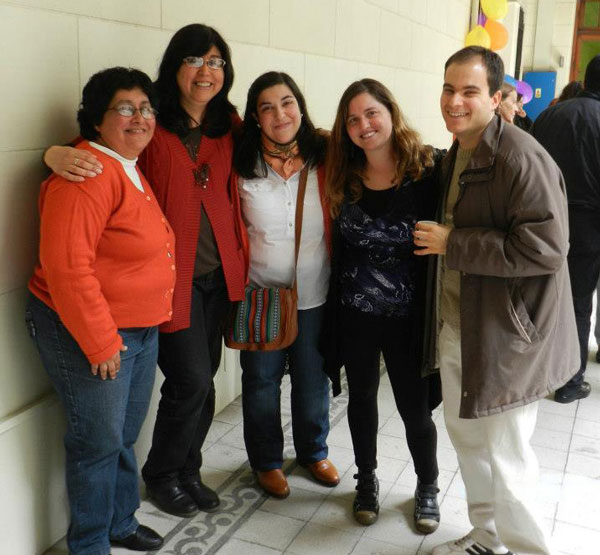
5 mn. with...
... The Community of Bethlehem-Nazareth
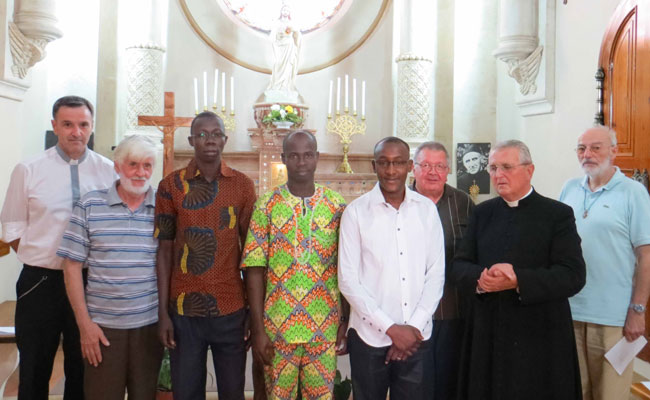
The community of Bethlehem-Nazareth, historical presence of the Congregation in the Holy Land, has been going through different stages. What are its mission fields and its everyday life? In this interview, the nine members of this community draw up the present portrait of a community born under difficult but good auspices, immersed at the same time in eternity and in the hazards of todays world.
Nef: At the beginning, what were the first services required of the Fathers from Betharram?
- Im sure everybody knows the story by now! The saintly Carmelite Blessed Miriam of Jesus Crucified succeeded in convincing Mgr Lacroix, Bishop of Bayonne and her Superiors to found a Carmelite monastery in the Holy Land. She wanted the Carmelite chaplaincy to be provided by the Betharramite Fathers whom she had known during her stay with the Carmelites in Pau. The first obstacle to be overcome: No contemplative order had so far entered Palestine: the Franciscans forbade it! Pius IX got over that decision which had been unanimously adopted by the Cardinals at the Propaganda on 16 May 1875 allowing the Carmelites of Pau to found a Carmelite monastery in Bethlehem. But another problem nearly put an end to the request for the presence of the Betharramite Fathers as chaplains: the request was expressed before Pope Leo XIII who asked: What does the Propaganda say? The answer was NO to the request of the arrival of the Fathers of Betharram. Very good, replied Pope Leo XIII, just tell the Propaganda that I am the Pope. A similar request came from the Dominicans; before being able to reply, Leo XIII had to ask permission of the Franciscans! I was very much criticised over the foundation by the Fathers from Betharram!
Seven Carmelites left Pau on 26 August 1875 and arrived at Jaffa 6 September. Their first chaplain was Fr Chirou. Right up to today the chaplaincy of the Carmel at Bethlehem and from 1910 that of Nazareth have been assured by the Fathers from Betharram.
Has the service of the local church much changed?
- After the foundation of the scholasticate, the team of Fathers professors was quickly invited to give lectures in the Major Seminary belonging to the Latin Patriarch, situated at Beit Jala, not far from Bethlehem. Some of the Fathers were even asked to be Rector of the Major Seminary. This service in the formation of the seminarians of the Latin Rite in Jerusalem lasted until 2010! The five Bishops actually in place in the Patriarchate: his Grace the Patriarch, his former Vicar General, his present Vicar General, the auxiliary bishop residing in Nazareth, and the new bishop in Jordan are all former students of the Fathers of Betharram; not forgetting the emeritus Patriarch, Mgr Michel Sabbah. Some of our confreres even held important positions in the Service of the Patriarchate.
We have lost count of all the visits to the many congregations of women religious for confessions, spiritual direction and conferences, or of the many sermons in the parishes or for special occasions. We mustnt forget the brotherly relations linking us with many mens congregations.
Another aspect of your mission is the presence of the regional novitiate, is it not?
- The novices were welcomed with open arms by a community already well acquainted with the young in formation coming from abroad, particularly from Central Africa. The change of surroundings was probably greater for the novices than for the religious already living here. But the young were quick in being of service in the house and even the rhythm of everyday life, how to pray, and the wish to get to know each of the religious in the community. Some of the Fathers contribute by giving lectures to the novices, and all are invited to come to the monthly community meetings. Once or twice a week the novices have a chance of seeing the missionary dimension of our religious life by facilitating a childrens afternoon at the Crèche and at a Jean Vanier Centre in Bethlehem. They will also have countless occasions of meeting other young people, for example the seminarians from Beit Jala on the football ground and the religious, male and female, who are deeply involved in missionary activity in Palestine-Israel.
Towards the end of the year the religious in the community will be asked to give their appreciation on each novice and how he will have survived this first year of the novitiate.
Now that the refurbishment of the buildings is completed, will the Bethlehem community be able to accept pilgrims? What kind of hospitality would you like to offer them?
- Our two Hospitality Centres, Bethlehem and Nazareth, give us the chance of telling the story of the presence of the Betharramites here and the originality of our missionary vocation. Our project, with which the novices are associated, is to make the walls of this Centre speak by displaying texts and photos. Some groups even ask for celebrations and for meetings.
The Holy Land is situated in a very sensitive region of the Globe. Does the political and social situation have any influence on the mindset of the religious?
- As it is impossible to ignore history, the important archaeological discoveries, the intermixing of cultures, the multi-religious meetings which have left their mark on the very varied populations of this country, so one cannot ignore the context in which the communities at Bethlehem and Nazareth are living.
This is something which cannot be approached honestly in a few lines! It is preferable to come to this country, and to come with great respect for the complexity of the situation, and with much attention for the reality, the whole reality, before expressing an opinion; there is enormous good will on both side of the great divide. Our real mission begins every time that there is an opportunity of meetings and the chance to encourage each one to hold a line of mutual respect and to accept the other with all his differences.
The collaboration between religious congregations and the Patriarchate must surely be very important. - All the male Religious (and for the first time the female Religious too) were invited to prepare the Year of Faith. Each one was able to express observations and make suggestions. One could feel that there was mobilization not only to deepen ones Faith, but to return to the masters of the Faith, that is the saints of the first centuries in the Holy Land, to restore life in the pilgrimage sites, to take part in conferences, and to dare to undertake new kinds of meetings.
The little village of Bethlehem reminds us of a population of simple artisans and shepherds. What are things like in 2012?
- Yes indeed! Bethlehem and Nazareth are often thought of as little villages typically Palestinian. But Bethlehem has a population of about 50 000 and Nazareth 80 000, mostly young! Bethlehem is developing a huge commercial activity and Nazareth is carried along by the pilgrimages. In Nazareth there are four hospitals and ten faith schools. As for Bethlehem there are two universities. One third of the population in the two towns is Christian. Nazareth is in Israel and is unaware of all the problems connected with the Wall separating Bethlehem and transforming this town into an open air prison. The daily life of the capital of Galilee is marked by a difference in the number of Israelis and Palestinians. Some talk of segregation. In the midst of such realities and difficulties our communities try how best to respond to the needs of the local Christians ..... and then of all the others!
Firmin, Joseph, Abib, you arrived here on 16 September 2012 for your first year of novitiate, what are your first impressions?
- In the afternoon of that same Sunday we had the grace of going to the Basilica of the Nativity with our Novice Master, Fr Jacky. We were able to keep silent, to meditate and to pray on the Mystery of the Incarnation, on the spot where Our Lord Jesus Christ came into this world. In Bethlehem where we live, the people speak Arab so we have difficulty in communicating. We are amazed at how the Palestinians look at us, the only Africans living in Bethlehem, except for pilgrims passing through. We also see the problem for the Israelis and the Palestinians to live together since every time we leave Bethlehem we have to show our passports for immigration control. Furthermore, from the point of view of the liturgy we see the numerous rites and churches here in the Holy Land (Catholics of the Latin, Melchite and Orthodox rites). The few visits we have made to the holy sites (the shepherds field, Nazareth, Capernaum, Mount Tabor etc) have helped us to make our own the Word of God, by reading the Gospel relative to the particular spot, and by spending some time there in prayer. At Bethlehem we are next door to the Carmelites; we go there for Sunday Mass with the Sisters when we are about a dozen in all. It is really very different from what we see at Adiapodoume or elsewhere in Africa.
What distinguishes this Host Community from anything you have seen so far??
- The community at Bethlehem is totally different from the formation community where we lived at Adiapodoume in Ivory Coast. First of all the pastoral responsibilities of the Fathers and Brother do not allow us to be together for prayer but every evening the whole community comes together for Vespers, the Rosary and a community meal. The novitiates programme is built into the communitys programme. Every Sunday at 12.00 we have a time for relaxation, known as the aperitif; we get together in the TV room for drinks and nibbles in a friendly atmosphere, until lunch at 12.30. Our lectures are given by our Fathers which is different from the two previous years when we attended lectures at the Major Seminary. We thank the Lord and the Congregation for being able to spend this canonical year of our novitiate here in the Holy Land so as to make ours the Word of God and to respond better to the call of Christ in the footsteps of St Michael Garicoits.
Brother Fernand Fonquerle
Sauvian, 1st December 1929 ~ Betharram, 16 October 2012
Other parishes called on him too for help with catechism, prayer groups, and Senior Citizens Groups. Here we are thinking about the parishes of Bordes, Lestelle and Montaud. It did him a world of good and at the same time he rendered great services.
He nourished his faith, drawn from the spirituality of St Michael Garicoits, within his religious community; for a long time at Betharram but also at Sarrence and Pau. He was also in contact with other places of prayer and pilgrimage, for example Paray le Monial; every year for the feast of the Sacred Heart, he used to get us the programme ordered especially from Paray le Monial.
As a Religious-Brother he lived in our midst, with his weaknesses and strengths, just like any one of us! Recently, physical and moral suffering took its toll on him. In spite of all that, often a smile would light up his face making a lasting impression on all who approached him.
He died quite suddenly, and after only a few hours in hospital. He was our brother, and as such we shall keep him in our prayers.
I was lucky to have had good working relation with Brother Fernand. I found that he wa a man who felt suffocated, full of fears and scars; despite a certain fragility he was capable of showing great brotherly care and attention, of sharing his joy in the service of the Lord, of praising Him in song and music. He loved the Divine Office and all the lovely celebrations. Brother Fernand was marked by his experience in a monastic community before entering our Congregation.
Perhaps those who knew Brother Fernand will have discovered how God calls his followers in the heart of their fragility. Nothing therefore can come between us and the love of Christ, even if we are troubled and worried, or are being persecuted...... These are the trials through which we triumph, by the power of Him who loved us. (Rom 8, 35-37). God loves all mankind just as he is. Sometimes God carries and supports him in the midst of his fickleness, his doubts and his weaknesses. Come to me all you who labour and I will give you rest says Jesus to us in the Gospel chosen for this funeral. God chose the path of weakness to prove his great love for mankind; Jesus chose our human condition to the extent of undergoing terrible suffering and a shameful death.
Religious Life is not a path of fulfilment by everything which is powerful, strong or brilliant. No, Religious Life is the humble response to Gods call inviting us to leave everything for the sake of the Kingdom. It is a response which engages the whole person with all his weaknesses, a response looking for consistency in life, a conversion to be resumed day after day, the total gift of ones life in the following of Christ poor, chaste and obedient. This was Brother Fernands experience and now he is enjoying that inner peace which he sought throughout his whole life.
Religious Life is still the offering of ones whole life to the Lord. Prayer and praise form an essential part of this life so as to grow in that deep peace with the Master of the Interior Life, Jesus Christ. Father, Lord of Heaven and Earth, I praise you; what you have hidden from the wise and the sage you have revealed to these little ones. Brother Fernand certainly tried to offer his life as a prayer of praise and intercession, by his availability for playing the organ to accompany the hymns during the celebrations at the sanctuaries including Lestelle and Montaut.
Nothing can separate us from the love of God, in Jesus Christ, our Lord, says St Paul. What hope is there for us this evening! What hope to know that a whole life is worth something in Gods eyes! What a hope to know that a whole life of love for God cannot be lost in the presence of death! Gods love is stronger than anything else. Gods love has overcome death. What a source of consolation this is for us as we try to conform our lives to that of Christ, whatever our vocation may be.
God our Father, you are the source of Life and Love. We thank you for Brother Fernands life; you gave us your Son, he is helping us to have confidence for it is in our weaknesses that we have the strength to progress, to get up again, and to always believe that life is stronger than death. We now present our Brother Fernand to you and ask you to receive him into your peace and your light for all eternity. Amen
Jean-Dominique Delgue, scj
10. THE GENERAL CHAPTERS BETWEEN 1987 - 2011
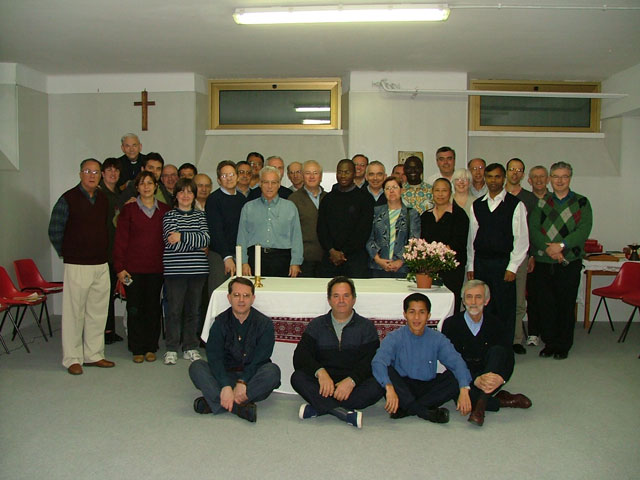
In his report to the 1993 General Chapter, Fr Sheridan said: We mustnt become a Federation of little Betharramite Congregations. This is perhaps the result to which the earlier stages of the story had brought the Congregation. United in spirit but very broken up, with a General Council linked by our Constitutions to the decisions and will of each of the Provincials but without the power, both legal and real, to pool human resources.
The task of carrying out the legal subdivision of the Congregation reached its summit at the end of the 1970s and the following decade, when the legal autonomy for administration and management was accorded to the remaining national realities which previously had been linked to other Provinces; this gave birth to the Vice-Province of Paraguay and the General Delegations of Uruguay, Spain and the Holy Land, fruits of the decisions taken at the General Chapters of 1975, 1981 and 1987. This resulted in the dispersion of the Institute into several large or small unities, each jealous of its own autonomy and above all of its own resources.
The desire for unity was still very much alive within the Congregation; it became more evident from the 1970s onwards, thanks to the initiatives for sharing human and spiritual resources on the part of the religious: from 1978 Refresher Courses in the Holy Land; in 1985 a study session in Betharram for the 150 anniversary of the foundation of the Congregation; the E.L.A.B. (Latin American meetings) from 1986; in 1990 Euro-Betharram in Colico and the different international meetings of young students both in South America and Europe.
An important decision was taken at the 1987 General Chapter, where, for the first time since 1903 the opening of a new missionary field was decided for India; this was going to be an international area of cooperation between the different forces and resources present at that time in the Institute.
No sooner was the new Superior General elected, Francesco Radaelli, than the Council of the Congregation at Triuggio named the objective as United towards the Future; this unity was to be concentrated on unity in formation, unity in cooperation with the laity, unity in the pooling of our goods; these three themes were to be further developed in the different messages from the General Council, in articles in the NEF and in international meetings.
The following Councils of the Congregation in Bethlehem in 1995 and Betharram in 1997 returned to the theme of unity, making use of the image of the family, a theme dear to Betharramite tradition, using themes like The Family en route and the Family in Ongoing Formation.
Meanwhile two projects were emerging, common to the whole Congregation: the Ratio Studiorum and the Formation of the Young. The result was the birth of an International Team for Formation. The 1999 General Chapter decided on the creation of Regions; this was a new departure taken by the Congregation. This Regionalisation of the Congregation responds to an ever urgent demand for unity and sharing: unity and sharing of manpower, resources, formation, animation and economy.
In his report to the Chapter the Superior General speaking about the meaning of the Regions said:
Organization & Animation: We can have a different view of the authority and function of the Government which has been elected, principally with its authority to animate the Family; the whole work of the General Councillors will be to animate, receive, keep, develop and construct the charismatic and missionary unity in the different Regions.
Formation: Have a single novitiate in each Region, as a first step... Amongst the other advantages I think it would be important to create, at the beginning of formation, a mentality, a life style, [...] an availability specific for Religious Life and especially that of our Family. This means that we must not begin simply by talking about internationality, nor even to write about it; but we must really try to understand cultures other than our own; [...] this would result in an enrichment and an enhancement of individuals but also of our charism itself.
Mission: Let communities be opened and situated where our charism is needed so that the identity of the charism and the mission may be respected.
Right from the beginning Regionalization looked like as a long process; from the project to its implementation, two other General Chapters will be necessary...
Roberto Cornara
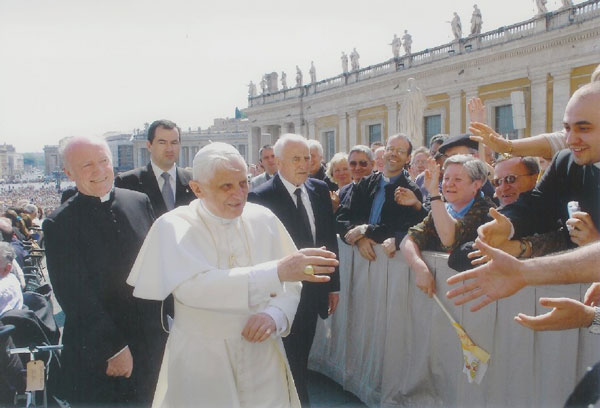
Document Actions






